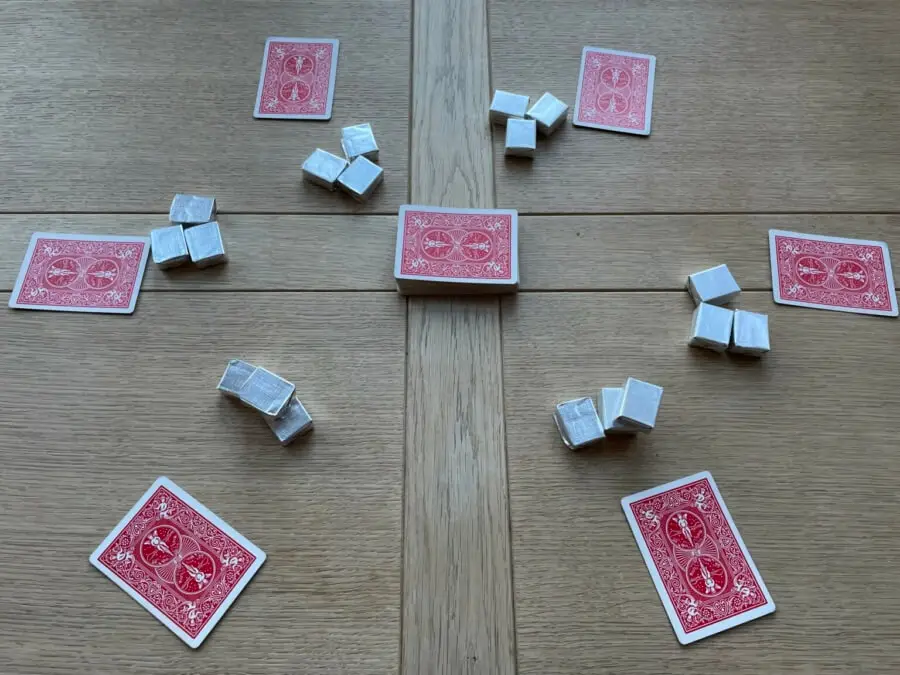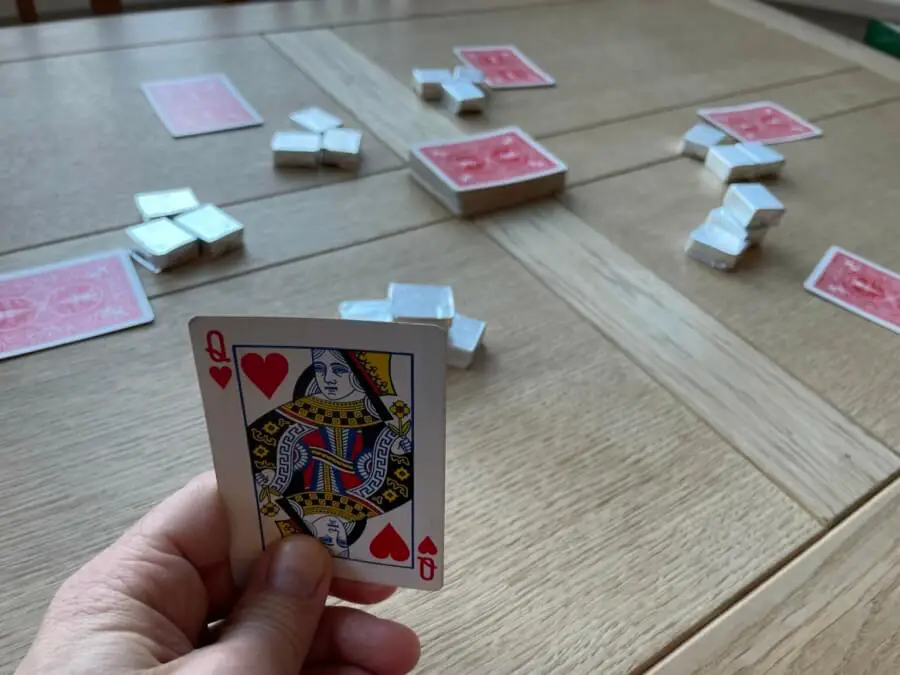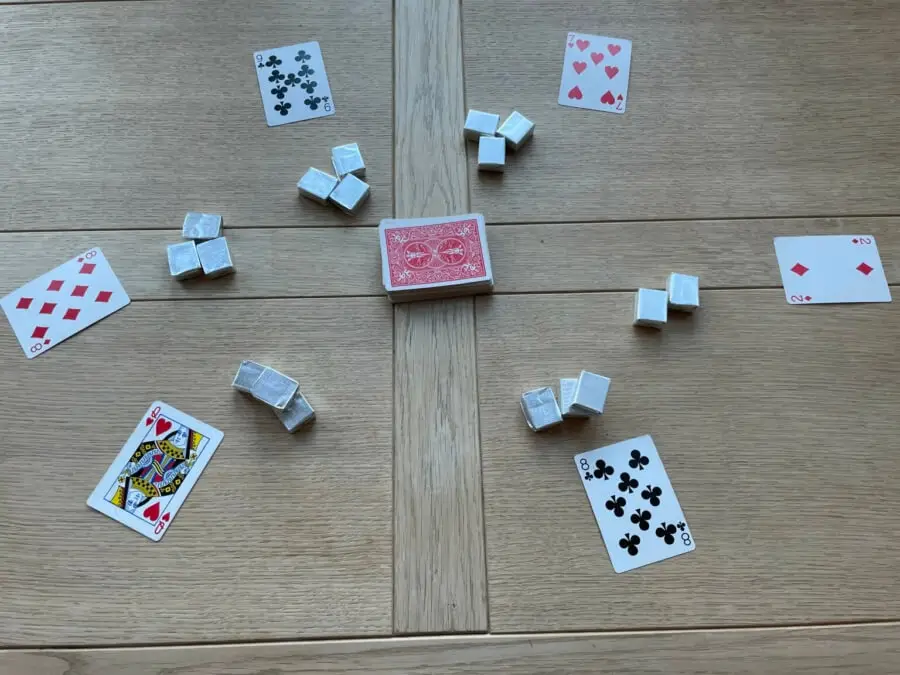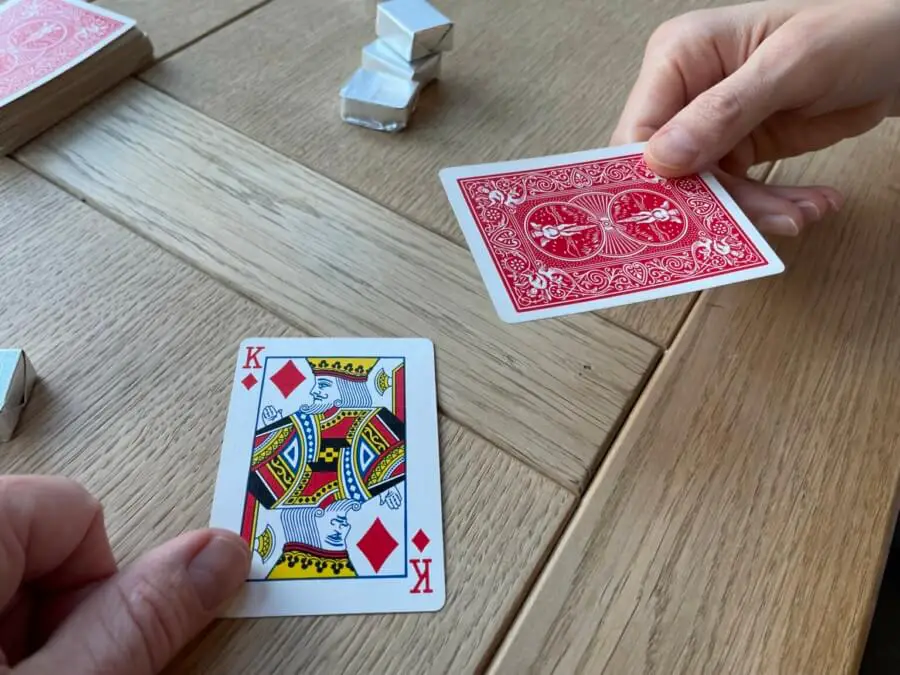Chase the Ace, also known as Pass the Ace or Cuckoo, is a straightforward card game designed for 5 or more players.
Its simplicity and fast-paced nature make it an ideal card game for both kids and adults. Each round quickly determines a single loser, which also makes it an ideal candidate for a drinking game, given that a forfeit drink can be included in the game easily.
This guide will cover the essential rules and strategies of Chase the Ace, helping players of all levels enjoy this fun and engaging card game.
Game Overview and Objective
Suitable for a group of 5 or more players, Chase the Ace combines elements of luck and strategy, making each round both unpredictable and exciting.
Rounds are quick, with each player only being dealt a single card, and being given only one chance to keep their card or pass it on.
The game’s objective is straightforward: avoid being the player with the lowest card at the end of each round.
It’s a game of quick decision-making and adapting to rapidly changing situations, ensuring a lively and engaging experience for all players.
How to Setup Chase The Ace
It’s crucial to have enough space for all players to sit in a circle, as the game involves passing cards around.
To begin a game of Chase the Ace, you’ll need a standard 52-card deck with the Jokers removed, and tokens (like coins or poker chips) for each player.
Each player starts with three tokens.
A dealer is assigned at random and shuffles the cards. Each player is dealt one card, face down, which each player keeping their card secret from the other players.

Chase the Ace Game Rules
- Starting the Game: The player to the dealer’s left goes first.
- Player’s Turn:
- Decide whether to Keep or Swap: Look at your card and decide to keep your card or swap it to the left. Remember, the objective is to avoid holding the lowest card at the end of the round.
- Swap: If you decide to swap, exchange your card with the person to your left.
- King Rule: If a player has a King, they can choose to block the swap. When this happens, the player holding the King flips it over so it’s visible to all players, and no exchange occurs.
- Dealer’s Turn:
- Decide whether to Keep or Swap from the Deck: The dealer has the same option, however they are exchanging with the remaining deck, instead of the player to their left.
- Swap: If the Dealer decides to swap, they exchange their card with the card on the top of the remaining deck pile.
- King Rule: If the card on top of the remaining deck is a King, the exchange is blocked, and the Dealer must keep the original card in their hand.
- Round End: All players reveal their cards.
- Lowest Card Loses: The player with the lowest card (Ace being the lowest) loses a token.
- Ties: If there’s a tie for the lowest, all tied players lose a token.
- Continuation: The Dealer moves to the left, and play continues until only one player has tokens left.


Strategies to win Chase the Ace
In Chase the Ace, while luck plays a significant role due to the randomness of the card distribution, there are still strategies to increase your chances of success:
- Observation: Pay attention to the reactions of players as they look at or pass their cards. This can sometimes give you a hint about the card they hold.
- Bluffing: Sometimes, it’s beneficial to pretend to be dissatisfied with a good card, encouraging the next player to swap with you.
- Playing the Odds: If you have a middle-range card, it might be safer to keep it, especially in larger groups where the odds of someone having a lower card increase.
- Reading the Game: As players lose tokens, the number of cards in play reduces. This changes the odds and should influence your decision-making.
Variations of Chase the Ace Card Game
Chase the Ace can be enjoyed in various forms, adding to its appeal.
Whilst it is also known as Pass the Ace or Cuckoo, there is also the card game Screw Your Neighbour which is very similar to Chase the Ace, whilst different enough to be considered a separate card game.
Here are some popular variations to the rules of Chase the Ace:
- Different Token Counts: Adjusting the number of tokens each player starts with can lengthen or shorten the game.
- Card Rankings: Some variations use different card rankings, like making certain cards immune or assigning special actions to them.
- Sudden Death: Instead of using tokens, some versions eliminate the player with the lowest card each round. This is more inline with Screw Your Neighbour.
- Team Play: Players can form teams, sharing tokens and making collective decisions.
- Drinking Game Rules: Incorporating drinking penalties for the player who loses a token adds a fun twist for adult players.
Chase the Ace Frequently Asked Questions
In Chase The Ace, which card blocks another player from swapping with you?
This would be the King rule. If a player has a King, they can choose to block the swap. When this happens, the player holding the King flips it over so it’s visible to all players, and no exchange occurs.
This also applies to the dealer if the card on top of the remaining deck is a King. The exchange would be blocked, and the Dealer must keep the original card in their hand.

If two players tie on the last hand in Chase the Ace, is the pot split or is the round replayed?
Typically, the round is replayed between the tied players to determine the sole winner.
If there are two players left in Chase the Ace and the dealer has a King, does the dealer have to turn it over?
Yes, revealing the King is necessary to block a swap, even with only two players remaining.
Does the dealer get to look at their card?
Yes, the dealer looks at their card before deciding whether to swap with the deck.
What happens if the deck runs out of cards?
If the deck runs out, reshuffle the discarded cards to form a new deck.
Can multiple decks be used for large groups in Chase the Ace?
Yes, for very large groups, using more than one deck can keep the game flowing smoothly.
Conclusion
Chase the Ace is a versatile and enjoyable card game, perfect for both casual play and as a light-hearted drinking game.
If you enjoy Chase the Ace, you might also like similar games such as ‘Spoons’ or ‘Crazy Eights‘, which also offer fast-paced, easy-to-learn fun.
Do you have any fun variations or further questions on the rules of Chase the Ace? If so, please comment below!

Avid game player with a competitive personality. Favourite board games include Ticket to Ride, Catan, Cambio and President. Find me on Xbox Live here.
Read the About page to find more about Tiny Monkey Games.